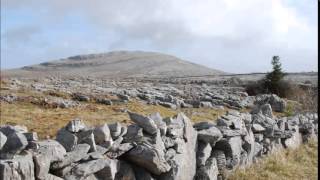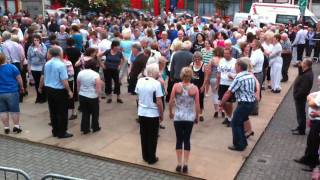Monday, 15 December, 2025г.
















Где искать: по сайтам Запорожской области, статьи, видео ролики
пример: покупка автомобиля в Запорожье
Poulnabrone Dolmen, Co. Clare. Ireland 29.05.2010.
Poulnabrone Dolmen, Co. Clare. Ireland 29.05.2010.
The natural limestone karst (An area of irregular limestone in which erosion has produced fissures, sinkholes, underground streams, and caverns). landscape is very uneven and was a bit tricky to walk upon whilst filming, hence a few wobbles.
The music from the YouTube library is :The Rolling Waves/The Market Town/Scatter The Mud by, Kevin Burke and Mícheál O'Domhnaill, from the album, Portland
Poulnabrone dolmen is a portal tomb located in Co. Clare. It is one of the most famous dolmens in Ireland. The large capstone rises up from the limestone bedrock of the Burren, supported by two portal stones that are 1.8 meters high. The people that were buried in Poulnabrone dolmen were Neolithic farmers. The radiocarbon dates from the bones produced an age of 3800 to 3200 B.C. The name Poulnabrone literally means 'The hole of the sorrows'. Poulnabrone Dolmen excavated in 1986 by Dr Anne Lynch of Duchas, among the discoveries were the remains of 16-22 adults and 6 children.
Excavations done in 1986 and 1988 by Ann Lynch produced many interesting finds, in addition to replacing two of the broken orthistat stones. This assures that Poulnabrone will remain a dominant part of the Irish landscape for many years to come. In the grykes (crevices between the pavement-like blocks of limestone),the Burren boasts a diversity of flora representing over 70% of Ireland's 900 native species in less than 0.5% of its area. No matter what time of year, there always seems to be something wonderful growing in these little unexpected areas.
Location: From Ennis, take N 85 north to R 476. Travel through Corofin and turn right onto R 480 at Leamaneh Castle. Signposted, Poulnabrone is approximately 9 kilometers up this road on the right. Visible from the road.
MORE : This tomb was in use during the Neolithic and radiocarbon dates place its use between 3,800 - 3,600 BC. The first excavation of Poulnabrone Dolmen was in 1986 and then again in 1988 by Ann Lynch. During this excavation, one portal stone was replaced, and the team excavated the chamber, portico, and cairn. The remains of up to 22 individuals from the Neolithic were found. Sixteen adults, six children, and one newborn (from the Bronze Age) were among the remains. Their bodies were not cremated. Only one adult was over the age of 40 while most died before they reached 30. Most of the children were between the ages of five and fifteen. The skeletal remains show evidence of arthritis. The tip of a flint or chert projectile point was found embedded in the hip of one individual. Two other healed fractures, one skull and one rib, were also found. Dental wear analysis shows evidence for the consumption of stone-grounded cereals. Also found in the burial chamber was a polished stone axe, 2 stone beads, a decorated bone pendant, a fragment of a mushroom-headed bone pin, 2 quartz crystals, several sherds of coarse pottery, and a number of arrowheads and scrapers. Grykes are crevices in the limestone that were then filled with remains. Chamber and grykes also were filled with the bones of various large and small animals.
Теги:
PRAK14 BONNAMASSIVE Poulnabrone Dolmen County Clare Ireland BURREN COROFIN Rolling Waves Market Town Scatter The Mud Kevin Burke Mícheál O'Domhnaill from album Portland 100 9331
Похожие видео
Мой аккаунт


 У вашего броузера проблема в совместимости с HTML5
У вашего броузера проблема в совместимости с HTML5


